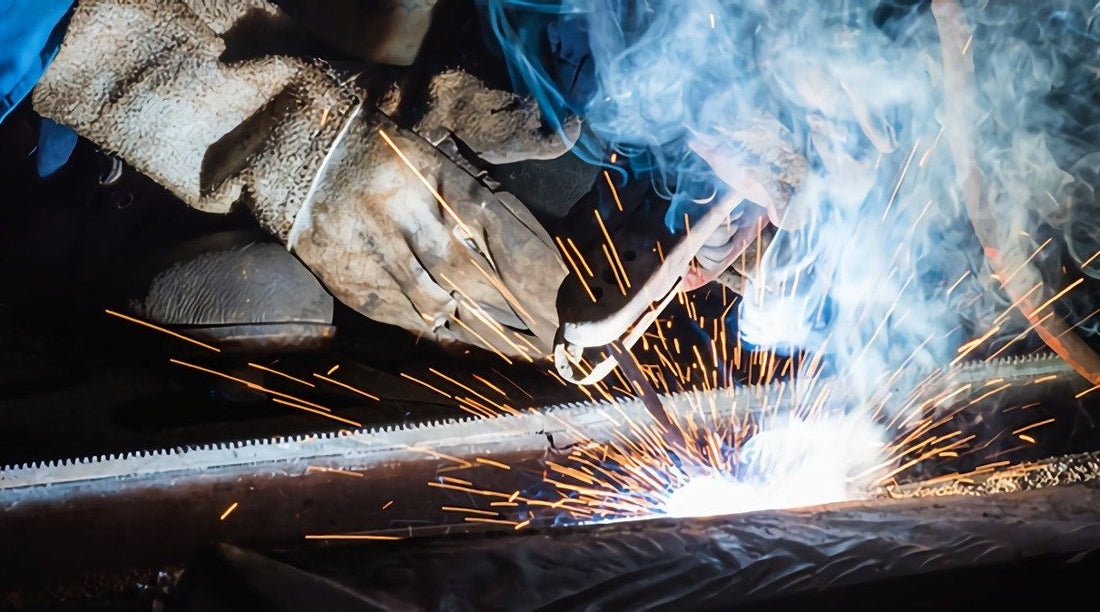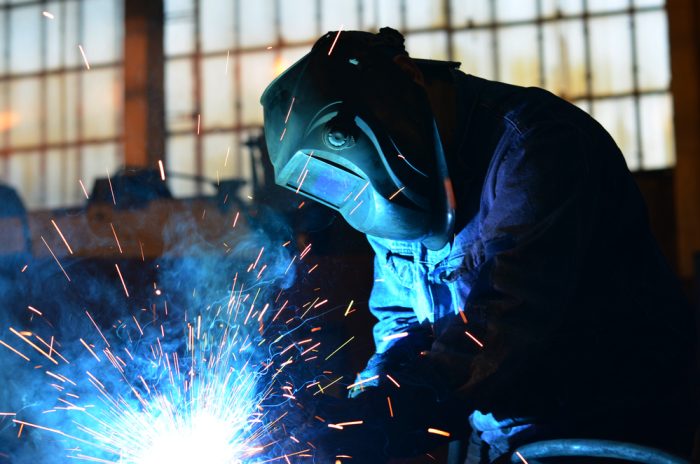Typical Welding Fixing Issues and Exactly How to Address Them Properly
Welding repair work usually encounter a series of problems that can endanger the integrity of the last product. Common issues consist of inadequate penetration, porosity, and misalignment, to name a few. Each problem offers unique difficulties that need certain approaches for resolution. Understanding these problems is important for welders aiming to enhance their results and skills. This discussion will certainly check out these typical welding fixing problems and reliable approaches to resolve them.
Poor Infiltration
Inadequate penetration occurs when the weld metal fails to completely fuse with the base product, resulting in weak joints and potential structural failings. This concern frequently comes from inadequate heat input, wrong electrode angle, or inappropriate welding speed. Welders may come across insufficient infiltration due to a mistake of the necessary criteria for a particular product thickness or kind. Additionally, contamination on the base product's surface area can prevent efficient bonding, intensifying the trouble. To resolve insufficient infiltration, welders should guarantee suitable settings on their devices and preserve a tidy work surface. Regular examination of welds is advised to identify any kind of deficiencies early, enabling timely modifications and the prevention of compromised architectural integrity in bonded assemblies.
Porosity
Porosity is a typical flaw in bonded joints that materializes as tiny gas bubbles entraped within the weld steel. This defect can compromise the integrity of the weld, resulting in minimized toughness and potential failing under stress. Montana Mobile Welding and Repair Welding. Porosity typically emerges from contamination, wetness, or improper welding strategies, which permit gases to escape into the molten weld swimming pool. To resolve porosity, welders ought to assure appropriate surface area prep work, keep a clean workplace, and use suitable welding criteria. Additionally, picking the best filler product and securing gas can minimize gas entrapment. Routine evaluation and screening of welds can assist recognize porosity early, guaranteeing timely rehabilitative activities are taken, consequently maintaining the high quality and reliability of the bonded framework
Imbalance
Misalignment in welding can occur from numerous factors, including improper arrangement and thermal expansion. Understanding the source is vital for reliable resolution. Numerous modification methods are available to straighten parts and assure architectural integrity.
Root causes of Imbalance
Welding imbalance commonly stems from a range of underlying issues that can endanger architectural honesty. One main cause is incorrect fit-up of components before welding, which can result in spaces and uneven surface areas. Variants in thermal expansion throughout the welding process can likewise cause distortion, specifically if the materials being signed up with have various coefficients of expansion. In addition, insufficient fixturing and securing might fall short to hold elements securely in location, resulting in movement during welding. Inadequately conserved equipment, including welding makers and devices, may introduce disparities in the weld grain, more adding to misalignment. Finally, driver error, coming from not enough training or experience, can additionally play a considerable role in producing misaligned welds.
Modification Techniques Readily Available
Dealing with imbalance properly needs a combination of corrective methods customized to the specific issues handy. One typical method is the usage of components or jigs to hold components in the proper setting throughout welding, making certain constant placement. Furthermore, preheating the materials can help in reducing distortion and boost fit-up. For considerable imbalance, mechanical adjustment techniques, such as making use of hydraulic jacks or clamps, can be utilized to fix the placement prior to welding. Post-weld warm treatment may additionally be essential to ease anxieties triggered by misalignment. Finally, mindful assessment and change throughout the configuration phase can protect against misalignment issues from becoming considerable issues, advertising a smoother welding procedure and boosting general structural integrity.
Distortion
Distortion is a typical difficulty in welding that can arise from various aspects, consisting of irregular home heating and cooling. Understanding the reasons for distortion is essential for carrying out effective avoidance techniques. Addressing this concern not just enhances structural honesty however additionally improves the overall high quality of the weld.
Reasons for Distortion
When subjected to the extreme warm of welding, products frequently undergo modifications that can cause distortion. This phenomenon mainly emerges from thermal development and contraction throughout the welding procedure. As the weld location warms up, the material increases; upon cooling, it acquires, which can create interior anxieties. Furthermore, unequal home heating across a work surface can intensify these anxieties, causing warping or bending. The kind of material additionally plays a significant function; metals with differing thermal conductivity and coefficients of expansion may respond differently, leading to uncertain distortions. Bad joint style and inadequate fixturing can add to misalignment throughout welding, boosting the likelihood of distortion. Understanding these causes is necessary for efficient welding fixing and avoidance techniques.
Avoidance Techniques
Reliable avoidance methods for distortion throughout welding focus on regulating warm input and ensuring correct joint design. Maintaining a consistent warm input assists to minimize thermal growth and contraction, which can lead to distortion. Making use of techniques such as pre-heating the work surface can additionally reduce the temperature level slope, promoting uniform heating. Furthermore, choosing suitable joint styles, such as T-joints or lap joints, can enhance stability and lower stress and anxiety focus. Carrying out proper fixturing to safeguard the work surfaces in position even more aids in maintaining alignment throughout the welding procedure. Finally, staggered welding series can distribute warmth much more uniformly, avoiding localized distortion. By applying these approaches, welders can considerably lower the likelihood of distortion and boost the general high quality of their welds.
Fracturing
Cracking is a typical problem come across in welding fixings, commonly arising from different variables such as inappropriate air conditioning prices, material choice, or insufficient joint preparation. The event of cracks can greatly endanger the stability of the weld, causing prospective failures throughout procedure. To resolve this concern, welders must initially analyze the origin, making sure that products are suitable and properly chosen for the details application. Additionally, managing the cooling price throughout the welding process is essential; rapid cooling can cause stress and bring about cracking. Correct joint style and prep work likewise add to reducing the risk. Carrying out these strategies can boost weld high quality and durability, inevitably decreasing the chance Montana Mobile Welding and Repair Belgrade of splitting in ended up weldments.

Insufficient Combination
A significant issue in welding repair work is incomplete combination, which takes place when the weld metal does not appropriately bond with the base product or previous weld passes - Belgrade. This defect can bring about weaknesses in the joint, potentially compromising the integrity of the welded structure. Factors contributing to insufficient blend consist of not enough warm input, inappropriate welding strategy, and contamination of the surface areas being signed up with. To resolve this problem effectively, welders must assure correct pre-weld cleansing and surface area preparation, along with change their welding criteria to accomplish appropriate penetration and combination. Routine assessment during the welding process can likewise assist determine insufficient blend early, permitting timely restorative steps to improve the total top quality of the weld
Overheating
While welding fixings can enhance architectural honesty, overheating presents a considerable difficulty that can bring about material destruction. Extreme warmth throughout welding can modify the mechanical residential properties of metals, leading to lowered strength, boosted brittleness, and bending. This phenomenon is especially crucial in high-stress applications where architectural reliability is extremely important. Determining overheating can entail aesthetic assessments for discoloration or distortion, along with monitoring temperature level during the welding procedure. To reduce the risks associated with getting too hot, welders must employ appropriate techniques, such as regulating warmth input, adjusting traveling rate, and making use of appropriate filler materials. In addition, carrying out pre- and post-weld warmth therapies can assist restore product residential or commercial properties and boost the overall top quality of the repair work, making certain long-term performance and safety and security.
Frequently Asked Questions
What Are the Typical Indications of a Welding Flaw?

Exactly How Can I Evaluate My Welds for Quality?
To check welds for top quality, one can use aesthetic evaluations, ultrasonic screening, and radiographic methods. Each strategy ensures architectural integrity, recognizes problems, and confirms adherence to defined standards, eventually improving the reliability of the welded joints.
What Security Safety Measures Should I Take While Welding?
When welding, one should focus on safety and security by wearing appropriate individual protective devices, ensuring correct ventilation, safeguarding combustible materials away, keeping a tidy work area, and recognizing surroundings to stop mishaps and injuries.
Can I Fix a Weld Without Remodeling the Entire Joint?
Fixing a weld without redesigning the entire joint is feasible, depending on the damage (Montana Mobile Welding and Repair Fabrication). Techniques such as grinding, adding filler product, or utilizing a welding procedure can effectively attend to particular problems while maintaining the bordering structure
What Tools Are Crucial for Effective Welding Fixes?
Crucial tools for reliable welding repairs consist of a welding equipment, wire brush, mill, protective gear, clamps, and filler materials. Each device plays a vital function in making sure high quality and safety during the repair work process. Porosity usually develops from contamination, moisture, or inappropriate welding strategies, which allow gases to escape into the molten weld pool. Inadequately maintained equipment, consisting of welding makers and devices, might introduce incongruities in the weld grain, more adding to misalignment. When subjected to the intense heat of welding, materials often go through changes that can lead to distortion. Cracking is a common problem come across in welding repair services, often resulting from various elements such as incorrect cooling prices, product option, or insufficient joint preparation. A significant problem in welding repair work is incomplete fusion, which occurs when the weld steel does not sufficiently bond with the base product or previous weld passes.